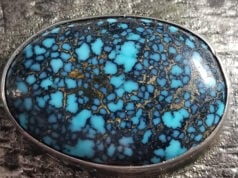Aquamarine is a beautiful gemstone that belongs to the beryl family, which also includes emeralds. Its color ranges from pale blue to deep turquoise, often resembling the color of the sea, which is how it got its name—”aqua” meaning water and “marina” meaning of the sea in Latin. This gemstone is prized for its clarity, luster, and the soothing, tranquil quality of its color.
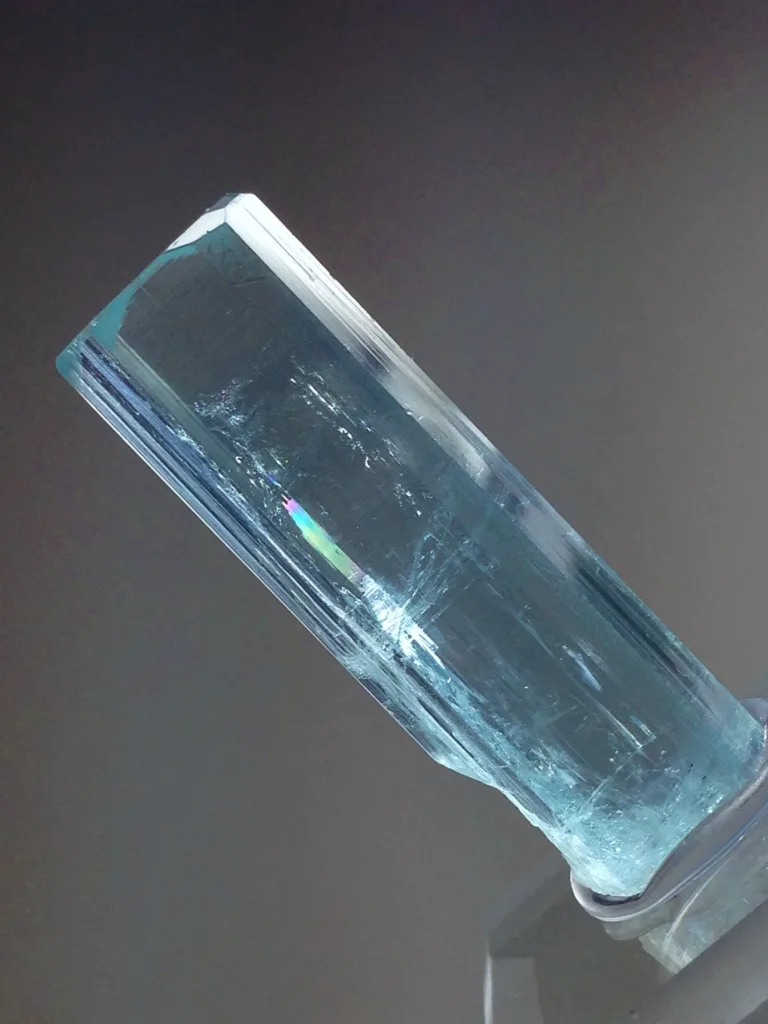
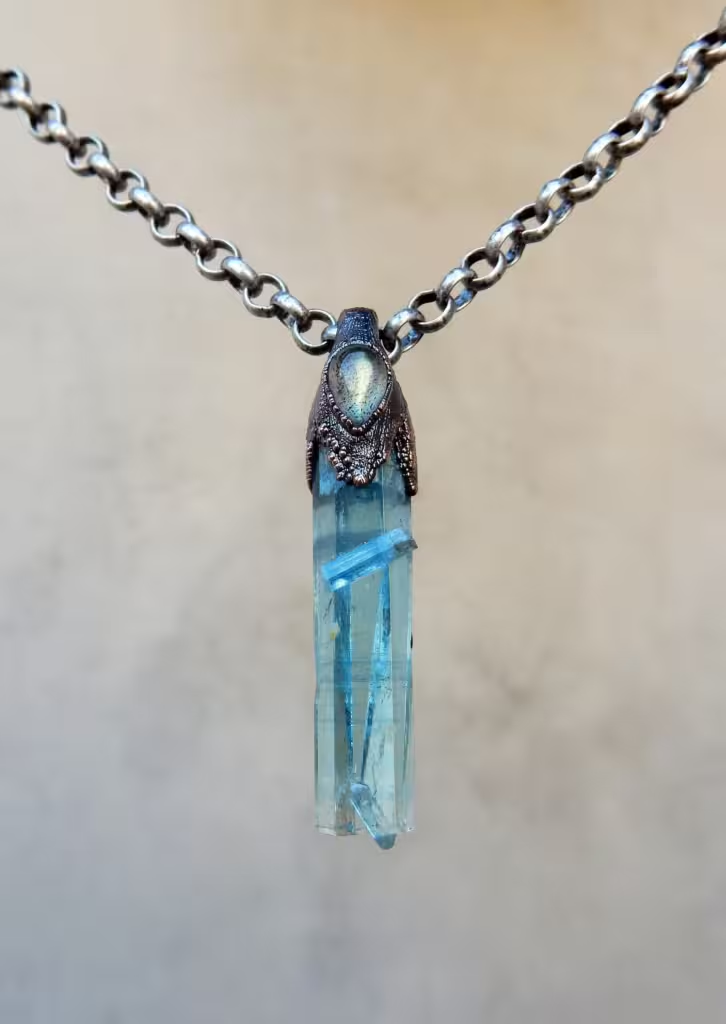
Aquamarine is primarily found in various locations around the world, including Brazil, Madagascar, and Nigeria. Its uses extend beyond jewelry; it is also popular in carvings and decorative items. The stone’s name and its enchanting hue evoke images of calm, serene waters, making it a symbol of tranquility and clarity.
Significance of Vietnamese Aquamarine
Vietnamese aquamarine, particularly from the regions of Quang Nam and Da Nang, has gained recognition for its distinctive qualities and high quality. The aquamarine found in Vietnam often exhibits a vibrant, intense blue color with remarkable clarity. This makes Vietnamese aquamarine highly sought after by collectors and jewelers alike.

The significance of Vietnamese aquamarine lies not only in its beauty but also in its impact on the local economy. The gemstone mining industry provides employment and supports communities in the regions where it is found. Additionally, the unique characteristics of Vietnamese aquamarine help to differentiate it in the global market, contributing to its growing reputation.
In summary, while aquamarine as a gemstone is celebrated for its serene color and clarity, Vietnamese aquamarine is distinguished by its vibrant hues and the role it plays in both the local economy and the global gemstone market.
Geological Sources of Vietnamese Aquamarine
Key Mining Regions in Vietnam

- Luc Yen:
- Location: Luc Yen is located in the northern province of Yen Bai. This region is renowned for its diverse and high-quality gemstone deposits, including aquamarine.
- Aquamarine Characteristics: The aquamarine from Luc Yen is known for its vibrant blue color and high clarity. The gemstones from this area often feature a range of hues from light to deep blue, making them highly desirable in the market.
- Quy Chau:
- Location: Quy Chau is situated in the central province of Nghe An. This area is another significant source of aquamarine and other gemstones.
- Aquamarine Characteristics: The aquamarine from Quy Chau tends to have a rich blue color with good transparency. It is known for its relatively large crystal sizes and high quality.
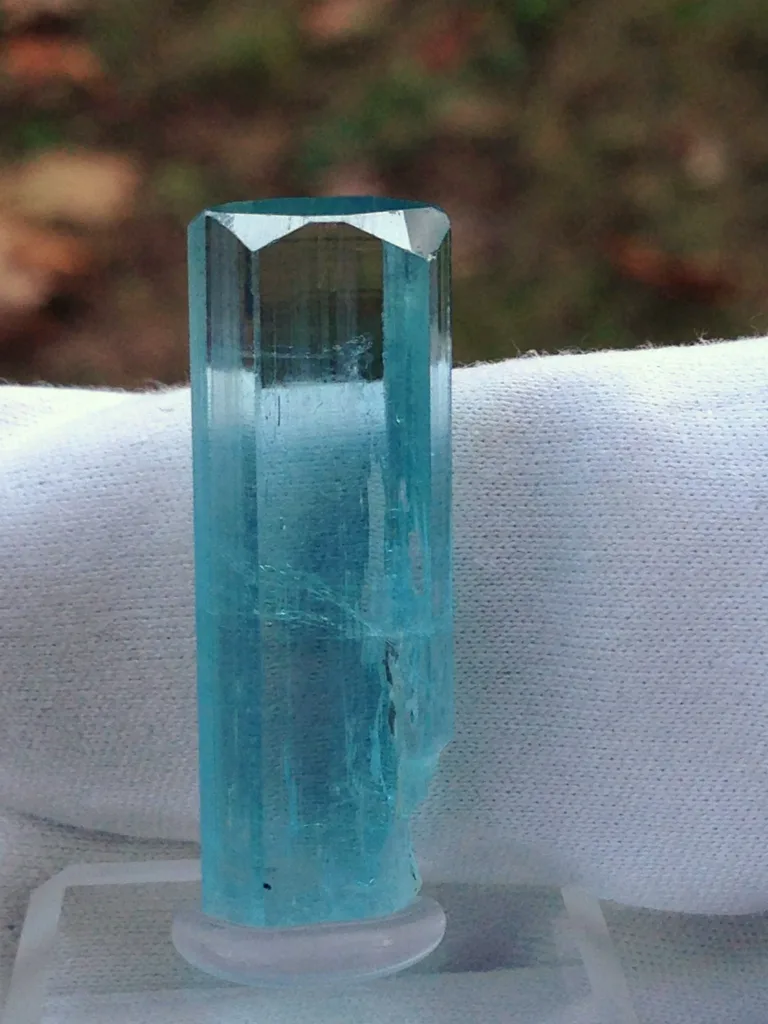
Mining Methods and Practices
- Traditional Mining:
- In many of the gemstone-rich regions of Vietnam, traditional mining methods are still prevalent. This often involves artisanal mining techniques where local miners use basic tools such as picks, shovels, and sieves to extract gemstones from alluvial deposits. These methods can be labor-intensive and require a good understanding of the local geology to locate gemstone-bearing deposits.
- Modern Mining:
- In recent years, some areas have seen the introduction of more modern mining practices. This includes the use of mechanized equipment such as excavators and bulldozers to remove overburden and access gemstone-bearing deposits. The use of these tools can increase efficiency and reduce the manual labor required.
- Environmental and Ethical Considerations:
- Mining practices in Vietnam, particularly in artisanal and small-scale operations, can sometimes pose environmental and ethical challenges. Issues such as land degradation, water contamination, and unsafe working conditions have been noted. Efforts are being made to address these issues through improved regulations and the promotion of more sustainable and responsible mining practices.
In summary, Vietnamese aquamarine is sourced from key regions like Luc Yen and Quy Chau, each contributing uniquely to the gemstone’s market value. Mining practices in these areas range from traditional artisanal methods to more modern techniques, with ongoing efforts to address environmental and ethical concerns.
Characteristics of Vietnamese Aquamarine

1. Color:
- Hue: Vietnamese aquamarine is often noted for its vibrant blue to blue-green colors. The hue can range from a pale, almost icy blue to a deeper, more intense blue or turquoise.
- Intensity: The color intensity is a key feature of Vietnamese aquamarine, with some specimens exhibiting exceptionally rich and vivid shades.
2. Clarity:
- Transparency: The clarity of Vietnamese aquamarine is typically high, with many stones being transparent to semi-transparent. High-quality specimens are often free of visible inclusions.
- Inclusions: While some aquamarine may have minor inclusions or internal features, Vietnamese aquamarine is generally valued for its clean and clear appearance.
3. Cut and Shape:
- Cut: Vietnamese aquamarine is commonly cut into various shapes to enhance its color and brilliance. Popular cuts include oval, round, emerald, and cushion shapes.
- Shape: The shape of the gemstone can affect its overall appearance, with well-cut stones showcasing their color and clarity to the fullest.
4. Size:
- Crystal Size: Vietnamese aquamarine can be found in a range of sizes, from small gemstones suitable for delicate jewelry pieces to larger stones that are used in more substantial jewelry designs or as collector’s items.
5. Luster:
- Brilliance: The luster of Vietnamese aquamarine is typically vitreous, meaning it has a glass-like shine. This luster contributes to the stone’s overall appeal and its ability to reflect light.
6. Durability:
- Hardness: Aquamarine ranks 7.5 to 8 on the Mohs scale of hardness, making it a durable gemstone suitable for everyday wear. This hardness ensures that the stone can withstand typical wear and tear in jewelry.
7. Origin-Specific Traits:
- Luc Yen: Aquamarine from Luc Yen is often noted for its particularly intense blue hues and high clarity, making it highly sought after in the gemstone market.
- Quy Chau: The aquamarine from Quy Chau is known for its rich color and larger crystal sizes, which can contribute to its unique appearance and value.
In summary, Vietnamese aquamarine is characterized by its vibrant color, high clarity, and excellent luster. Its range of hues, from pale to deep blue, along with its generally high quality, makes it a prized gemstone in both local and international markets.
Quality Assessment of Aquamarine
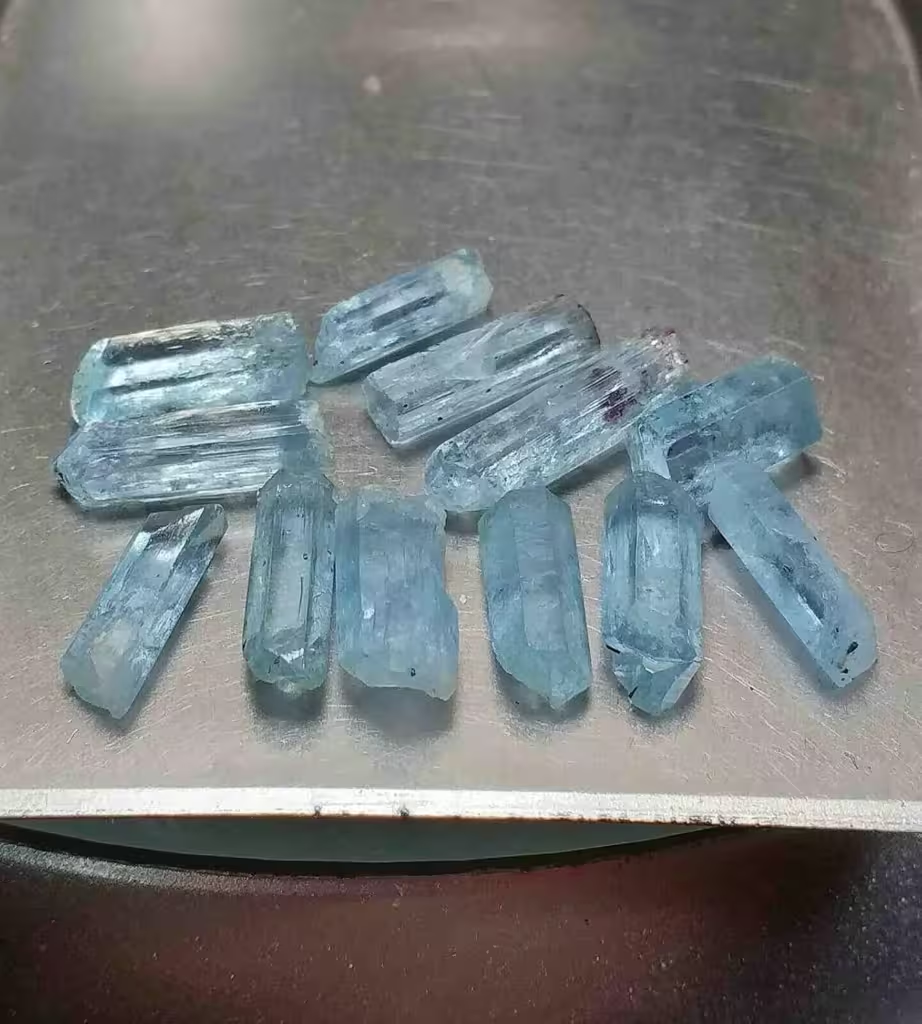
1. Criteria for Evaluating Aquamarine Quality
- Color:
- Hue: The most critical factor in determining aquamarine quality is its color. The ideal hue is a bright, clear blue. Aquamarine with a deeper blue or blue-green tint is generally considered more valuable.
- Tone and Saturation: Higher-quality aquamarine will have a vivid, intense color without being overly dark. Even distribution of color throughout the stone is preferred.
- Clarity:
- Transparency: Aquamarine should be as transparent as possible. Stones with high clarity and minimal visible inclusions are more valuable.
- Inclusions: Minor inclusions are common, but stones with few or no visible inclusions, especially under magnification, are considered higher quality.
- Cut:
- Proportions: The cut should enhance the stone’s color and brilliance. Well-cut aquamarine will have balanced proportions and symmetrical facets.
- Polish: A high-quality cut will also feature a smooth, reflective surface. The polish should be free of scratches or dull spots.
- Size:
- Carat Weight: Larger aquamarines are rarer and often more valuable. However, size should be balanced with other quality factors such as color and clarity.
- Luster:
- Brilliance: Aquamarine should exhibit a high level of brilliance and a vitreous (glass-like) luster. The stone should reflect light well and have a lively appearance.
2. Differences Between Vietnamese Aquamarine and Aquamarine from Other Regions
- Color:
- Vietnamese Aquamarine: Often noted for its vivid blue to blue-green hues with good color saturation. Vietnamese aquamarine can have a strikingly intense color, especially from Luc Yen and Quy Chau.
- Other Regions: Aquamarine from Brazil, Madagascar, and other locations may also exhibit excellent colors, but the hue can vary widely. Brazilian aquamarine, for instance, can range from pale blue to more subdued blue-green tones.
- Clarity:
- Vietnamese Aquamarine: Typically has high clarity with minimal inclusions. The clean appearance of Vietnamese aquamarine often makes it very desirable.
- Other Regions: Aquamarine from other areas may have varying degrees of clarity. For example, some Brazilian aquamarines might have more visible inclusions or be less transparent.
- Cut and Shape:
- Vietnamese Aquamarine: Often cut to maximize the stone’s vibrant color and clarity. The craftsmanship may be refined to highlight the best features of the stone.
- Other Regions: Cuts can vary widely based on regional practices and preferences. Aquamarine from other regions may also be cut to enhance its color but could feature different styles or techniques.
- Size:
- Vietnamese Aquamarine: Can be found in larger sizes, particularly from certain deposits like Quy Chau, making these stones potentially more valuable.
- Other Regions: Size can vary greatly. Some regions might produce larger crystals, while others might focus on smaller or medium-sized stones.
In summary, the quality of aquamarine is assessed based on its color, clarity, cut, size, and luster. Vietnamese aquamarine is distinguished by its vibrant colors and high clarity, often surpassing aquamarine from other regions in these aspects. However, each source can have unique qualities that contribute to the overall value and appeal of the gemstone.
Uses and Applications of Aquamarine
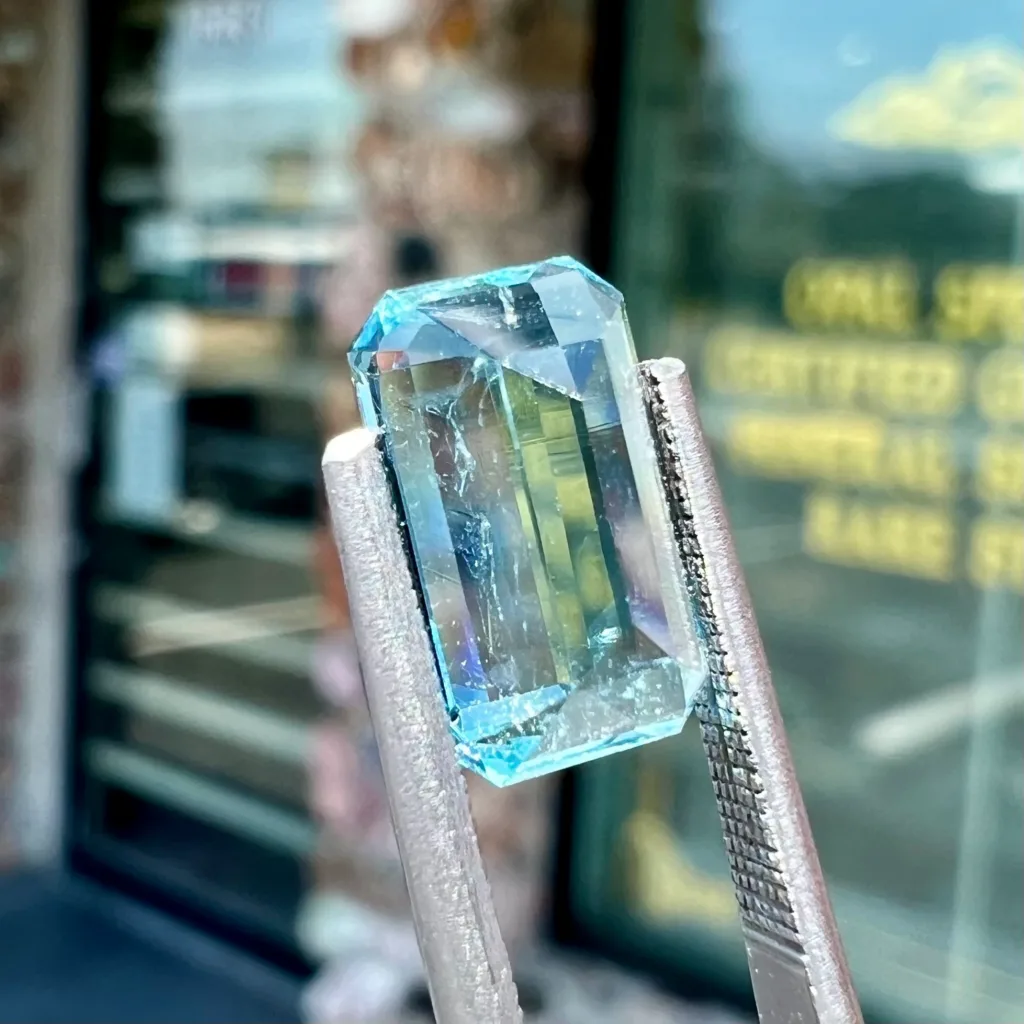
1. Jewelry:
- Rings: Aquamarine is commonly used in rings, often as a center stone in solitaire settings or as part of intricate designs. Its clarity and color make it a popular choice for engagement rings and fashion rings.
- Necklaces: Aquamarine is featured in various types of necklaces, including pendants and chains. The stone’s brilliant color and clarity add elegance to both simple and elaborate designs.
- Earrings: Aquamarine earrings can be found in styles ranging from stud earrings to drop earrings. The stone’s ability to reflect light enhances its visual appeal in these settings.
- Bracelets: Aquamarine is used in bracelets, either as standalone stones or combined with other gemstones. Its durability makes it suitable for daily wear.
- Brooches and Pins: Aquamarine is also used in brooches and pins, where its color can stand out in detailed and ornate designs.
2. Collectibles and Decorative Items:
- Carvings: Aquamarine is often carved into intricate shapes and designs for use in decorative objects. These can include figurines, sculptures, and ornamental pieces.
- Cabochons: The gemstone is sometimes cut into cabochons (smooth, rounded cuts) for display purposes or as decorative elements in various objects.
3. Healing and Metaphysical Uses:
- Healing: In alternative medicine, aquamarine is believed to have calming and soothing properties. It is often used in crystal healing practices to promote emotional balance and reduce stress.
- Meditation: The stone is also used in meditation to enhance tranquility and clarity of mind. Its blue color is thought to help with emotional release and mental clarity.
4. Industrial Uses:
- Industrial Applications: Although less common, aquamarine’s hardness and durability mean it can be used in industrial applications, such as abrasives or in cutting tools. However, this is more often the case with other types of beryl that are less valuable.
5. Investment and Collecting:
- Investment: High-quality aquamarine, particularly those with exceptional color and clarity, can be valuable and sought after by collectors and investors.
- Collecting: Gem enthusiasts and collectors value aquamarine for its beauty and rarity. Collecting can involve acquiring specimens from various sources, including unique or large stones.
In summary, aquamarine is versatile and valued for a range of uses, from fine jewelry to decorative items and metaphysical applications. Its clear, vibrant color and durability make it a desirable gemstone across different contexts.




























